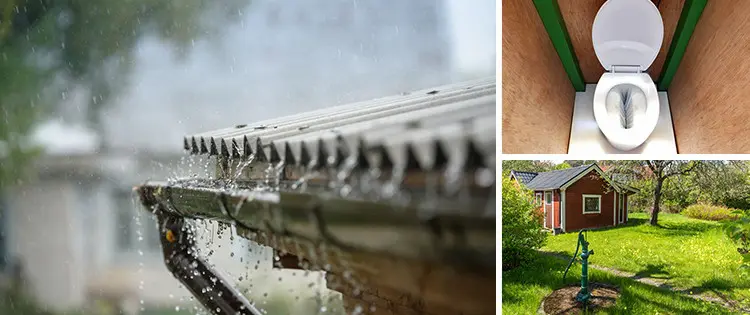Water is an important resource, and its value cannot be overstated. Without water, no life can survive on earth, not even the plants in the driest desert.
As humans living in the US, we have been spoiled. Our cities pipe clean water into our homes for almost endless consumption. We learn to use water for everything, as though it is a never-ending resource that magically arrives when we need it.
Unfortunately, we know that this is not everyone’s experience and many places in the word are struggling to find water, even in the United States. As climate change intensifies, earth’s clean water sources are disappearing, and weather patterns are changing. Depending on where you live, there may be a drought and you might feel like you have no option but to rely on the government to provide for you.
This is not a great spot to be in. No one wants to have to completely rely on the government to supply clean water, at least not in the case of an emergency.
That’s why it is important that you plan a system to save every drop of water on your property.
By thoughtfully implementing systems to save every drop of water that touches your land, you can prepare yourself and your family for a future filled with fresh water. You can mitigate risk of running out of water by mixing different techniques and finding out what works best for you.
Safety First
It is important that you always consider safety first when harvesting water from your property, especially if you are going to drink it.
If you live off grid or have a well, your water may not be automatically tested for quality. This means that you could be drinking harmful chemicals or bacteria that can make you sick. Even if you don’t farm on your land, others in your area might use agricultural chemicals that impact the entire watershed.
If you collect rainwater, you need to be conscious of the chemicals and surfaces that the water touches before collection. Many conventional roofs have chemicals that seep into the water and make it unsuitable for consumption. Don’t assume that just because it came from the sky it is fresh.
Luckily, you can easily purchase water quality kits to test any water source that you are consuming. You can also use a water filter, to provide extra filtration.
I also recommend testing water that you intend to use for bathing and washing dishes, just to be safe. Even though you aren’t technically drinking that water, bacterial and chemicals can seep through our skin and still make us sick.
Related: How to Build a Water Purification System in 10 Minutes
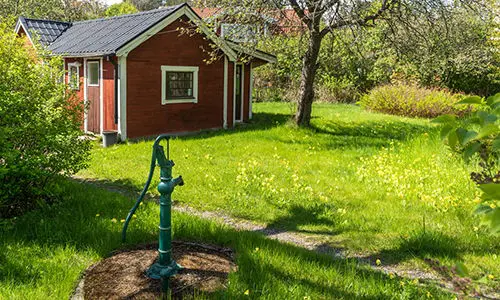
Use A Waterless Toilet
Across the US, 30% of the water flowing through homes is used for flushing the toilet. Changing how you use the bathroom is one of the best ways to save water.
If you live off grid, you can easily incorporate a waterless toilet into your living arrangements. A waterless toilet might get rid of waste through compost or through an incinerator that creates ash.
While you can certainly make your own rudimentary composting toilet, you can also purchase more sophisticated models that fit better into the design of a conventional home. Having a waterless toilet that looks and functions like a “normal” toilet also helps to make sure that guests understand how to properly use it.
If you aren’t jumping at the idea of a waterless toilet, you can still save water in the bathroom. Installing a low-flow toilet will significantly reduce the amount of water used per flush from about 5-6 gallons to 1.5 gallons. You can also recycle and use the water you wash your hands with, to flush the toilet.
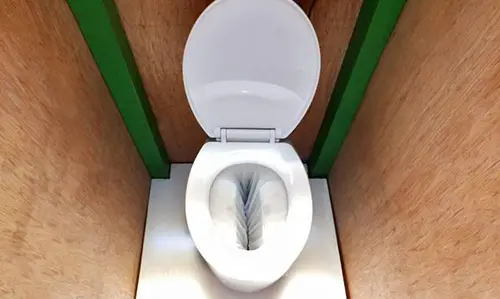
Cultivate A Healthy Ecosystem
To really start saving water in the long run, you need to encourage your land to retain water in the soils. This means you must have a healthy ecosystem around you.
If you have a well on your property, preserving ground water through the soil will help to replenish your supplies so that the well doesn’t dry up.
Even if you don’t have a well, a healthy ecosystem will grow crops with deep roots that don’t need to use as much additional water for irrigation. This is because the soil will stay moist for longer as the ecosystem keeps water from running off your property.
Incorporating native and diverse plantings provides habitat for beneficial insects. These insects pollinate and provide services for your crops and flowers to grow. As the flowers and plants grow, the roots keep the topsoil on your land from eroding.
When healthy, the whole ecosystem works together to save water.
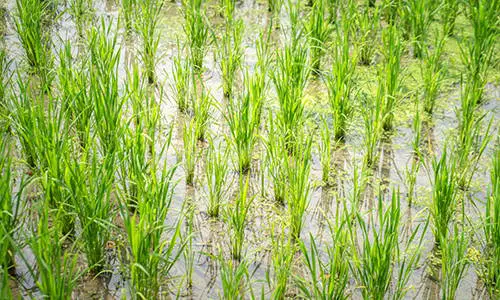
Harvesting Rain Water
A rain barrel system is an easy way to collect and store rainwater on your property. Rain barrel systems are excellent for saving water because they can be customized to fit your space and size requirements.
Most rain barrels collect water from a roof or other flat surface that drains into a barrel through a gutter. If you want a freestanding system that is not near a building, you can create a large funnel to catch the water.
Rain barrels come in all shapes and sizes and can be connected easily with PVC pipe so that you can choose which barrel to deplete at a time. This is great for irrigation and if you must store the rain barrels in an area hard to access.
There are many tutorials online that teach you how to modify an existing barrel, or you can purchase reclaimed barrels in most local areas. Just make sure that the barrels were used to store food-grade materials and not something harmful.
Related: Easy DIY 165 Gallon Rain Harvester
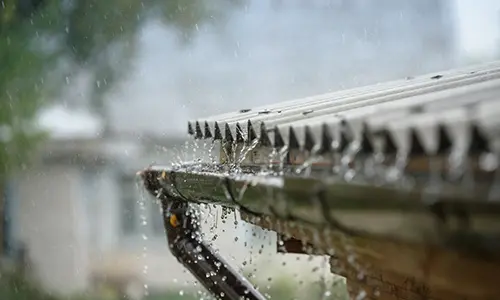
Build A Rain Collection Pond That Doubles As A Wildlife Pond
A rainwater collection pond is another way to save excess water on your property and support a healthy ecosystem. A pond will naturally collect rainwater and if you connect a pipe, you can use it in case of an emergency. This can be especially helpful if you live in an area with wildfires or severe drought.
If you have animals, a rainwater collection pond is also a great source of water for the summertime. If you carefully plan a pond that encourages native wildlife to come to your property, you will also get the added benefit of bringing pollinators and predators to help eat bugs and other pests.
Take Baby steps
It will take time to implement a comprehensive system to save every drop of water that comes onto your property. Be patient and take baby steps to make it happen.
Everyone’s land, climate and situation are different, so it is important that you find a system that works for you and your water needs.
You may also like:
 Ingenious Ways To Recycle Plastic Bottles
Ingenious Ways To Recycle Plastic Bottles
This Homemade Device Can Power Up Your Entire House 7 Days in a Row (Video)
How You Can Find Out If Your Homestead Water Is Polluted Or Clean

